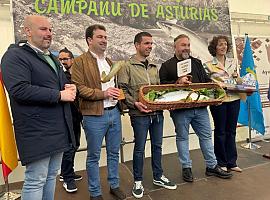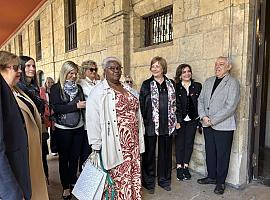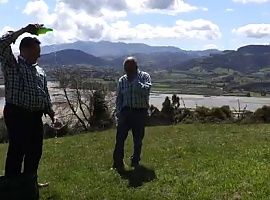Rome, May 31, IRNA -- Sustainable development cannot be realized unless hunger and malnutrition are eradicated, FAO said in a policy document prepared for the Rio+20 Summit to be held in June in Rio de Janeiro, according to UN Information Center in Tehran.
"We cannot call development sustainable while this situation persists, while nearly one out of every seven men, women and children are left behind, victims of undernourishment," said FAO Director-General José Graziano da Silva in Rome.
"The quest for food security can be the common thread that links the different challenges we face and helps build a sustainable future. At the Rio Summit we have the golden opportunity to explore the convergence between the agendas of food security and sustainability to ensure that happens," he added.
One of the great flaws in current food systems is that despite significant progress in development and food production hundreds of millions of people are hungry because they lack the means to produce or purchase the food they need for a healthy and productive life, according to FAO's report.
"Improving agricultural and food systems is essential for a world with both healthier people and healthier ecosystems," it says.
The report, Towards the future we want: end hunger and make the transition to sustainable agricultural and food systems, urges governments to establish and protect rights to resources, especially for the poor; incorporate incentives for sustainable consumption and production into food systems; promote fair and well-functioning agricultural and food markets; reduce risks and increase the resilience of the most vulnerable; invest public resources in essential public goods, especially innovation and infrastructure.
Link between hunger and environment
The report stresses that hunger reduction and sustainable development are irrevocably connected, and that better governance of agriculture and food systems is key to achieving both targets.
Agriculture and food systems are already major users of resources. For example, food systems consume 30 percent of the world's energy. The crop and livestock sectors use 70 percent of all water withdrawals.
Three fourths of the world's poor and hungry live in rural areas and most of them depend on agriculture and related activities for their livelihoods. Forty percent of the world's degraded lands are in areas with high poverty rates. "Hunger puts in motion a vicious cycle of reduced productivity, deepening poverty, slow economic development and resource degradation," the report says.
Access to natural resources — such as land, water or forests — is essential for the 2.5 billion people who produce food for their own consumption and income.
The farmers who operate the 500 million small farms in developing countries face various resource limitations resulting in insufficient access to food and nutrition. They need clear tenure rights to promote equitable access to and sustainable management of resources like land and water.
Towards sustainable food production and consumption systems
Food consumption and production systems must achieve more with less. On the consumption side, we need to shift to nutritious diets with a smaller environmental footprint, and reduce food losses and waste throughout the food system.
FAO estimates that global food losses and waste amount to 1.3 billion tonnes per year — roughly one-third of the world food production for human consumption — and correspond to more than 10 percent of the world's total caloric energy consumption.
On the production side, soil, water and nutrient depletion, greenhouse gas emissions, pollution and the degradation of natural ecosystems must be targeted, the report said. Benefits provided by nature such as clean air and water (ecosystem services) need to be protected and harnessed to achieve sustainable growth.
More with less
Agriculture must produce more food but with fewer resources like energy and water. FAO is promoting an eco-system approach called Save and Grow to agriculture that draws on nature's contribution to agricultural growth, for example, soil organic matter, water flow regulation, pollination and natural predation of pests — and applies appropriate external inputs at the right time and in the right amount to improved crop varieties that are resilient to climate change and use nutrients, water and external inputs more efficiently.
Feeding 9 billion people
In 2050 there will be an expected global population of 9 billion, with increased incomes and rising food demand. Pressure on the world's agricultural and food systems and the resources they use will grow. Worse, unless purposeful action is taken, the increase in food production of 60 percent needed to meet effective demand will still leave behind over 300 million people who are expected to suffer from chronic hunger in 2050 because they will remain without the means to access food.
The only way to ensure their food security is by creating decent jobs, paying better wages, giving them access to productive assets and distributing income in a more equitable way.
"We must bring them into society, complementing support to smallholders and income generation opportunities with the strengthening of safety nets, cash for work and cash transfer programmes that contribute to strengthening of local production and consumption circuits, in an effort that must contribute to our sustainable development goals," said Graziano da Silva.
FAO believes that feeding all the of the earth's population is possible if bold policy decisions are taken on enhancing poor people's access to food, levels of food waste and how agriculture is used for non-food purposes. All depends on the choices made today in managing agricultural and food systems, the report said.
Improved governance is essential
FAO's new policy paper calls for improved governance of the food and agriculture system as a prerequisite for a sustainable future. Part of the debate around good governance will also need to decide who pays for these costs.
The paper describes a fair and effective governance systems as one which is transparent, participatory, results-focused and accountable — at the global, regional, national and sub-national levels. The report cites the reformed Committee on World Food Security, which now includes a large number of stakeholders including governments, civil society, international organizations and the private sector as one of the models that could be followed.
FAO calls upon the governments attending Rio+20 to commit themselves to reducing hunger and malnutrition more quickly; to use the voluntary guidelines on the right to food and land tenure for achieving food security and equitable sustainable development; to support the implementation of technical and policy approaches to agricultural development that integrate food security and environmental objectives; to ensure that costs and benefits of the transition to sustainable food production and consumption systems are shared equitably; to adopt integrated approaches to achieving sustainable agriculture and food systems; to implement governance reforms to ensure polices are carried out and commitments are fulfilled.




















